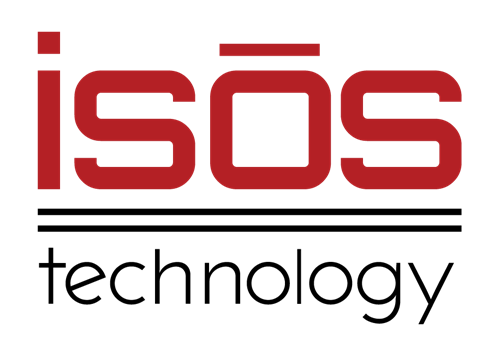 When it comes to streamlining operations for Fortune 1000 companies, the decision between Atlassian and Microsoft can have a profound impact on your organization's efficiency and productivity. Both platforms offer distinct advantages, but as you navigate the complexities of project management tools, understanding how Atlassian's tailored solutions excel in meeting the dynamic demands of large corporations is essential.
When it comes to streamlining operations for Fortune 1000 companies, the decision between Atlassian and Microsoft can have a profound impact on your organization's efficiency and productivity. Both platforms offer distinct advantages, but as you navigate the complexities of project management tools, understanding how Atlassian's tailored solutions excel in meeting the dynamic demands of large corporations is essential.
By exploring the nuances of each option and how they align with your operational goals, you can make an informed choice that propels your team towards operational excellence and success in the competitive business landscape.
Key takeaways
- Atlassian offers tailored tools for collaboration, flexibility, and scalability in Fortune 1000 operations.
- Microsoft tools like Teams and Planner lack the depth and customizability needed for complex operations.
- Atlassian's focus on innovation and user-friendly interfaces align well with dynamic Fortune 1000 environments.
- Seamless integration and robust customization options in Atlassian products enhance operational efficiency.
- Long-term value considerations favor Atlassian's subscription-based pricing and bundled packages for cost savings.
Atlassian vs. Microsoft
When it comes to project management tools, selecting the right one is vital for optimizing operational efficiency and effectiveness. The right project management tools can make a significant difference in how smoothly your projects run, how well your teams collaborate, and how efficiently resources are utilized.
With a plethora of options available in the market, it's important to choose a tool that aligns with your organization's specific needs and goals.
Effective project management tools offer features such as task tracking, team communication, resource allocation, and progress monitoring. These tools help streamline workflows, improve productivity, and enhance project outcomes.
When deciding between Atlassian and Microsoft, the choice can greatly impact how your projects are executed and completed. Understanding the advantages of Atlassian over Microsoft in terms of flexibility, customization, and user-friendliness can lead to better project management practices and ultimately contribute to the success of your organization's projects.
Why project management matters for Fortune 1000 companies
Project management matters for Fortune 1000 companies due to the increasing complexity of modern projects within large organizations. Collaboration and communication are key in successfully maneuvering these intricate projects.
Embracing agile solutions is essential to meet the dynamic needs of large-scale operations efficiently.
The complexity of modern projects
In modern organizations, the complexity of projects can often be overwhelming, underscoring the critical need for seamless collaboration and communication to guarantee success. When dealing with large-scale operations, the following aspects become essential:
- Cross-Functional Teams: Bringing together individuals from diverse backgrounds and expertise can tackle multifaceted challenges effectively.
- Real-Time Communication Tools: Utilizing platforms that enable instant messaging, video conferencing, and file sharing enhances team communication and collaboration.
- Clear Project Objectives: Setting specific, measurable, achievable, relevant, and time-bound (SMART) goals ensures everyone is aligned towards a common purpose.
- Regular Progress Updates: Scheduled check-ins and progress reports help track milestones, address issues promptly, and keep the project on course.
Effective team communication and collaboration lay the foundation for navigating the intricate nature of modern projects within Fortune 1000 companies. By fostering an environment where information flows freely and teamwork is prioritized, organizations can streamline operations and achieve desired outcomes efficiently.
The need for agile solutions
Amidst the complexity of modern projects in Fortune 1000 companies, embracing agile solutions has become imperative for enhancing operational efficiency and adapting to dynamic market demands. Agile methodologies involve breaking down projects into smaller, manageable tasks, allowing for flexibility and rapid adjustments to changing requirements. By shifting towards agile project management tools, organizations can foster collaboration, increase productivity, and deliver high-quality results more effectively.
The benefits of agility in large-scale operations are numerous. Agile methodologies enable teams to respond quickly to market shifts, enhance customer satisfaction through iterative improvements, and promote innovation by encouraging experimentation and risk-taking.
Additionally, agile project management tools facilitate transparency, communication, and alignment across departments, leading to better decision-making and streamlined workflows.
In today's fast-paced business environment, where agility is key to staying competitive and meeting customer expectations, Fortune 1000 companies stand to gain significantly from embracing agile solutions in their project management practices.
Overview of Atlassian and Microsoft project management tools
Atlassian and Microsoft offer extensive project management tools tailored to meet varying needs.
Atlassian's Jira excels in agile project management, Confluence simplifies collaborative documentation, and Trello streamlines task management.
Conversely, Microsoft's Project suite provides a thorough solution, albeit with limitations in handling large-scale projects effectively.
Key offerings from Atlassian
When comparing project management tools, consider the key offerings from Atlassian, including Jira, Confluence, and Trello, for streamlining operations effectively.
- Jira: Known as the agile project management powerhouse, Jira helps teams plan, track, and manage their work efficiently, making it a robust alternative to Microsoft Teams.
- Confluence: Facilitating collaborative documentation, Confluence simplifies knowledge sharing and team communication, enhancing productivity and cohesion within your organization.
- Trello: With its intuitive interface, Trello provides simple task management for teams, allowing for easy organization and visualization of projects, contrasting with Microsoft Teams' interface.
- User-Friendly Interface: Atlassian's tools boast user-friendly interfaces, making it easy for team members to adopt and use these tools effectively, potentially providing a smoother experience than Microsoft Teams.
Incorporating these Atlassian offerings into your project management toolkit can enhance efficiency and collaboration within your team, providing a competitive edge in streamlining operations for Fortune 1000 companies.
Microsoft's project management suite
Microsoft's Project Management Suite includes various tools such as Microsoft Project, Teams, and Planner, each offering unique features and functionalities for organizing and overseeing projects efficiently.
While Microsoft Project is a robust tool for detailed project planning and tracking, Teams facilitates communication and collaboration among team members, and Planner simplifies task management and progress tracking.
However, when comparing Jira vs. MS Project, it's important to note that Microsoft tools may have limitations in large-scale environments.
In larger organizations, Microsoft's tools may struggle to handle the complexity and scale of multiple interconnected projects. Integration between different Microsoft tools can also be challenging, leading to potential inefficiencies in project management processes.
Additionally, Microsoft's tools may lack some of the advanced features and customization options that are available in Atlassian's Jira, which is specifically designed for agile project management and scalability.
Therefore, while Microsoft's Project Management Suite offers valuable tools for project organization, teams in Fortune 1000 companies may find that Atlassian's offerings better suit their needs for extensive project management at scale.
Advantages of Atlassian for tech-savvy project management leads
For tech-savvy project management leads, Atlassian offers seamless integration among its products, enhancing workflow efficiency with APIs and third-party app connectivity.
You can benefit from robust customization options, tailoring workflows to meet your unique project needs, along with custom dashboards and reporting capabilities.
Engage in enhanced collaboration features like real-time document collaboration in Confluence and streamlined communication through integrated commenting in Jira.
Seamless integration among Atlassian products
Enhancing workflow efficiency through seamless integration among Atlassian products empowers tech-savvy project management leads to streamline operations and optimize productivity. By connecting Jira and Azure DevOps seamlessly, you can leverage the strengths of both platforms and enhance your project management capabilities.
Here's how this integration benefits you:
- Enhanced Collaboration: Integrating Jira with Azure DevOps allows for smoother collaboration between development and project management teams.
- Streamlined Processes: By syncing data and workflows between the two platforms, you can eliminate manual tasks and reduce the risk of errors.
- Improved Visibility: The integration provides a unified view of project progress, allowing you to make data-driven decisions more efficiently.
- Seamless Automation: Connecting Jira and Azure DevOps enables automated processes, saving time and increasing overall operational efficiency.
With these benefits, integrating Atlassian products not only simplifies your workflow but also boosts your team's effectiveness in managing complex projects.
Robust customization options
Seamless integration among Atlassian products not only enhances workflow efficiency but also offers tech-savvy project management leads robust customization options to tailor workflows for unique project needs and access custom dashboards and reporting capabilities.
When it comes to customization, Atlassian provides a wide range of tools and features that allow you to design workflows that align perfectly with your project requirements. Whether you need to create specific processes, automate tasks, or define unique stages, Atlassian's customization options empower you to mold your project management environment according to your preferences.
Moreover, Atlassian's custom dashboards provide a detailed overview of your project's progress and performance at a glance. You can personalize these dashboards to display the metrics and data that are most relevant to your project, ensuring that you stay informed and in control.
Additionally, the reporting capabilities in Atlassian tools enable you to generate detailed and insightful reports tailored to your specific needs, helping you make informed decisions and track the success of your projects effectively. With Atlassian, the power to customize and optimize your project management experience is truly in your hands.
Enhanced collaboration features
Leveraging Atlassian's platform empowers you, as a tech-savvy project management lead, to engage in real-time collaboration on project documents in Confluence and streamline communication through integrated commenting in Jira.
When comparing Confluence vs Microsoft Teams, here's why Atlassian stands out:
- Real-time Collaboration: Confluence offers a seamless environment for multiple team members to collaborate simultaneously on project documents, fostering efficiency and teamwork.
- Centralized Communication: Jira's integrated commenting feature allows for clear and concise communication directly within the project management tool, reducing the need for extensive email threads or external chat platforms.
- Document Versioning: Confluence automatically tracks document versions, ensuring that all team members are working on the most up-to-date information, promoting accuracy and consistency.
- Task Assignment: Jira enables easy task assignment through comments, simplifying project management and keeping everyone on the same page regarding responsibilities and deadlines.
Scalability and flexibility with Atlassian
Atlassian's scalability and flexibility empower you to adapt effortlessly to growth and changes within your organization. Its tools are tailored to expand seamlessly alongside your evolving needs, offering the flexibility to manage project deadlines and scope changes with ease.
Whether you opt for cloud solutions for enhanced accessibility or on-premises deployment for maximum control, Atlassian provides versatile options to suit your specific requirements.
Adapting to growth and changes
How do Atlassian tools adapt to your organization's growth and changes, ensuring flexibility in managing project deadlines and scope adjustments? Atlassian's tools are designed to scale seamlessly as your organization expands, offering the necessary flexibility to accommodate shifts in project requirements effectively.
Here's how Atlassian facilitates adaptability in project tracking and planning:
- Scalability: Atlassian tools can effortlessly handle increased data volume and user load as your organization grows, ensuring smooth operations without compromising performance.
- Customization: Tailor project workflows, issue types, and fields to align with changing project needs, allowing for personalized project management that evolves with your organization.
- Real-time Collaboration: Enable teams to collaborate in real-time, fostering agile decision-making and adaptability to project scope changes promptly.
- Integration Capabilities: Seamlessly integrate Atlassian tools with other essential software to support cross-functional collaboration and streamline operations as your organization expands.
Cloud vs. On-Premises deployment options
As your organization considers deployment options for Atlassian tools, evaluating the benefits of cloud solutions for remote teams versus maintaining control with on-premises options is essential for ensuring scalability and flexibility.
When comparing Azure DevOps vs. Jira, cloud solutions offer unparalleled benefits for remote teams. With cloud deployment, your team can access Atlassian tools from anywhere, promoting collaboration and productivity. The cloud also provides automatic updates and scalability, ensuring your tools evolve with your organization's needs without the burden of manual maintenance.
On the other hand, on-premises deployment offers control and security for organizations that prioritize data governance and compliance. With on-premises options, you have full control over your infrastructure and data, allowing you to customize settings to meet specific requirements. However, this control comes with the responsibility of managing updates and scaling resources as needed.
Ultimately, the choice between cloud and on-premises deployment options depends on your organization's priorities regarding accessibility, control, and scalability. By carefully evaluating the benefits of each, you can make an informed decision that best suits your organization's needs.
Cost-effectiveness and ROI of using Atlassian
When considering the cost-effectiveness and ROI of using Atlassian, it's important to note the competitive pricing models that set Atlassian apart from Microsoft.
By comparing pricing structures and exploring cost-saving strategies through Atlassian's product bundles, you can make informed decisions for your organization's budget.
Additionally, the long-term value derived from increased efficiency, as evidenced by successful case studies in Fortune 1000 companies, showcases the measurable improvements in productivity and project delivery that Atlassian offers.
Competitive pricing models
By comparing the pricing structures of Atlassian and Microsoft, businesses can effectively assess cost-saving strategies and the overall cost-effectiveness and ROI of using Atlassian's product bundles.
Here's a breakdown to help you understand the competitive pricing models:
- Atlassian: Offers flexible subscription-based pricing, allowing businesses to scale according to their needs.
- Microsoft: Typically requires upfront licensing fees with additional costs for upgrades and support.
- Atlassian: Provides bundled packages that combine multiple tools at a discounted rate, promoting efficiency and cost savings.
- Microsoft: Often charges extra for add-on features, leading to potential hidden costs that may impact your budget.
When comparing Atlassian vs. Microsoft, consider not only the initial costs but also the long-term value and savings that can be achieved through streamlined operations.
Long-term value through increased efficiency
Implementing Atlassian's tools in Fortune 1000 companies has demonstrated significant enhancements in productivity and project delivery, showcasing the long-term value and efficiency gains achievable with Atlassian's solutions.
When comparing Microsoft Planner vs. Jira, Atlassian's Jira stands out for its robust project management capabilities, customizable workflows, and scalability to meet the diverse needs of large enterprises.
Fortune 1000 companies leveraging Jira have reported measurable improvements in team collaboration, task tracking, and overall project visibility. By streamlining operations through Jira's advanced features like agile boards, backlog prioritization, and real-time reporting, organizations have seen a marked increase in productivity and a reduction in project delivery times.
These success stories highlight the tangible benefits of investing in Atlassian's solutions for long-term value creation and operational efficiency. For Fortune 1000 companies seeking to optimize their workflows and drive sustainable growth, Jira proves to be a strategic choice for achieving lasting improvements in project management and overall business performance.
Real-world success stories: Atlassian in action
You're about to explore real-world success stories showcasing Atlassian's impact.
Case Study 1 explores a Fortune 1000 company's agile transformation, highlighting challenges overcome and solutions applied.
Case Study 2 demonstrates enhanced communication and collaboration efficiency through Atlassian tools, backed by key performance metrics.
Case study 1: Successful agile transformation
During a Fortune 1000 company's adoption of Atlassian tools, they encountered significant challenges that necessitated innovative solutions for their successful Agile transformation. The company, facing hurdles in aligning teams and improving project visibility, turned to Atlassian for support.
Here's how they overcame these obstacles:
- Building a Strong Community: Leveraging the Atlassian community for insights, best practices, and support.
- Implementing Atlassian T5 Methodology: Embracing Atlassian's T5 methodology to enhance team collaboration and efficiency.
- Utilizing Jira for Project Management: Streamlining project management processes through Jira's powerful features and customizable workflows.
- Continuous Training and Support: Providing ongoing training and assistance to make sure teams were proficient in using Atlassian tools effectively.
Case study 2: Streamlined communication and collaboration
Efficiency gains in communication and collaboration were exemplified in Case Study 2, showcasing tangible improvements through key metrics. Atlassian's T5 platform, combined with their Jira software, revolutionized how a Fortune 1000 company managed projects.
By implementing Atlassian's tools, the company saw a 30% reduction in email volume within the first month. This decrease in email traffic directly translated to a 20% increase in task completion rates as employees spent less time sorting through messages and more time on productive work.
Moreover, the implementation of Jira led to a 15% decrease in meeting durations as project statuses, updates, and questions were seamlessly tracked within the software. This resulted in a 25% increase in project velocity, allowing teams to deliver quality work faster than before.
The simplified communication channels facilitated by Atlassian's tools not only enhanced collaboration but also improved employee satisfaction, leading to a more engaged and efficient workforce.
Support and community around Atlassian products
When it comes to Atlassian products, you can rely on extensive training resources like Atlassian University to help you master the tools efficiently.
Being part of the Atlassian community means more than just access to forums – it opens up networking opportunities and knowledge sharing that can enhance your experience.
User support plays an essential role in successful tool adoption, and Atlassian guarantees you have the support you need every step of the way.
Comprehensive training resources
Discover the extensive training resources available through Atlassian University and other offerings to enhance user proficiency and drive successful adoption of Atlassian tools.
Here's why these resources are essential:
- Atlassian University: Access a wide range of online courses, tutorials, and certifications tailored to different skill levels, ensuring a thorough learning experience.
- Hands-On Workshops: Engage in interactive workshops led by experts to gain practical experience and insights on optimizing tool usage within your organization.
- User Support Resources: Benefit from dedicated user support channels, including help centers, community forums, and ticketing systems for prompt assistance and issue resolution.
- Customized Training Programs: Explore personalized training programs designed to meet the specific needs of your teams, promoting a seamless learning journey and maximizing the benefits of Atlassian tools.
A thriving user community
Being part of the Atlassian community offers a plethora of benefits, including networking opportunities, access to forums, and valuable knowledge sharing. As a user of Atlassian's collaboration software, you have the advantage of connecting with a diverse community of professionals who are keen to share their expertise and insights. By participating in this community, you can expand your network, learn best practices, and stay updated on the latest trends in project management and software development.
Networking opportunities within the Atlassian community can lead to potential collaborations, career growth, and valuable connections in your industry. Forums provided by Atlassian offer a platform for users to ask questions, seek advice, and engage in discussions with like-minded individuals. This interactive space fosters a culture of continuous learning and problem-solving.
Knowledge sharing is a key component of the Atlassian community, where users freely exchange ideas, tips, and solutions to common challenges. By actively participating in this community, you can enhance your skills, troubleshoot issues more effectively, and contribute to the collective expertise of the collaboration software ecosystem.
Conclusion
Consider the advantages of choosing Atlassian over Microsoft for project management, and take the first step towards streamlined operations by exploring Atlassian solutions today.
Here's why you should make the switch:
- Customizability: Atlassian offers a wide range of customizable tools that can be tailored to your specific project management needs.
- Collaboration: With Atlassian, collaboration among team members is seamless, promoting efficiency and teamwork.
- Scalability: As your company grows, Atlassian tools can easily scale with you, ensuring that your project management remains effective.
- Innovation: Atlassian is known for its commitment to innovation, regularly updating and improving its solutions to keep you ahead in the tech-savvy world.
Tech-savvy leaders like you can benefit greatly from Atlassian's cutting-edge tools.
Sign up to receive more great content
Learn more about Atlassian and how Isos can help by signing up to receive our latest blogs, eBooks, whitepapers and more.













